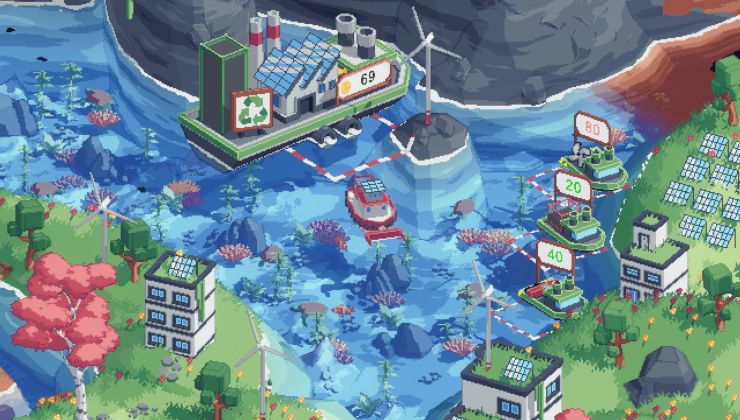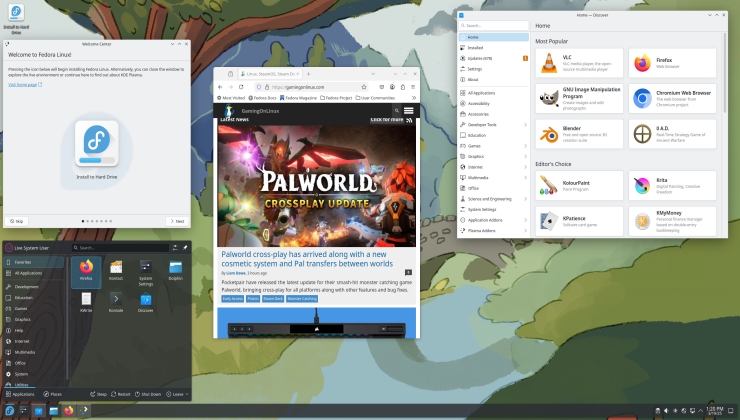Mesa 10.3 just went stable two days ago. The rolling release distro's are busy shoving it into testing and those brave enough to use such a distro can have some fun with that.
As a warning if you're looking for specific tests against FGLRX then I'm not your man as these tests are for gaming ability and not raw performance differences.
I conducted the benchmarks this time around to see if the long glaring issue of AA causing quite a large drop was better and so a few more tests have snuck in this time.
So here are the results for 10.3:

Straight off the bat you can see that Portal 2 continues to gain speed and has jumped another 60 which makes it much more than playable and although I did not test it, I would assume that any AA quality setting will not cause drops in playability.
Team Fortress 2 has always been the hardest source game due to the amount of action going on. This time the jump isn't so impressive although still a good 20fps increase however the clear improvement is before I could not run the game acceptably on 2xAA but now hitting 98fps proves that we have come a long way. I can also vouch that 16xAA is fully playable for me although not benchmarked here.
Xonotic again is hitting 35 fps increases. Nothing major but now those of you with 120hz monitors can be happy :P
Unigine Tropics ran great throughout and for whatever reason remains capped at 60fps despite removing VSync. Very smooth and not really much of a benchmark for southern islands these days.
Portal is now hitting ridiculous FPS of 198 on 2xAA and 75 on 16xAA so basically you won't have any trouble with that game (or any source game by the way these look) anymore.
Which leaves us with a more disappointing Valley result. For one reason or another it dropped slightly by 0.4 fps. I can only assume it uses features that were not developed in 10.3 or were not optimised (which is quite likely given mesa's focus on GL4 right now which won't be going for performance).
My Opinion
I will also say these results do seem to differ with other cards from the same generation, the 7950 is one of the best supported cards on radeonSI right now (but I don't have any other cards, so you're free to test and report back). The basic feeling I'm getting right now for mesa is that if your card is of 7XXX series or lower and you're not feeling the need for GL4 games then the mesa driver might do you some good.
It's interesting the recommendation used to be for people to not use mesa driver unless they do primarily 2D stuff, but now I would happily throw GL3 and lower games into the bag and given a years time I would expect to be in the same situation but talking about GL4 instead. This is a handy source to see how much of GL4 is supported and what is left to be done. :)
As always, check this Google doc for all the data I captured from the games and the files I used for the benchmarks.
If you have any questions about using mesa or how the benchmarks were done then leave them in the comments or drop into #gamingonlinux and I will do my best to respond :).
Happy Gaming!
As a warning if you're looking for specific tests against FGLRX then I'm not your man as these tests are for gaming ability and not raw performance differences.
I conducted the benchmarks this time around to see if the long glaring issue of AA causing quite a large drop was better and so a few more tests have snuck in this time.
So here are the results for 10.3:

Straight off the bat you can see that Portal 2 continues to gain speed and has jumped another 60 which makes it much more than playable and although I did not test it, I would assume that any AA quality setting will not cause drops in playability.
Team Fortress 2 has always been the hardest source game due to the amount of action going on. This time the jump isn't so impressive although still a good 20fps increase however the clear improvement is before I could not run the game acceptably on 2xAA but now hitting 98fps proves that we have come a long way. I can also vouch that 16xAA is fully playable for me although not benchmarked here.
Xonotic again is hitting 35 fps increases. Nothing major but now those of you with 120hz monitors can be happy :P
Unigine Tropics ran great throughout and for whatever reason remains capped at 60fps despite removing VSync. Very smooth and not really much of a benchmark for southern islands these days.
Portal is now hitting ridiculous FPS of 198 on 2xAA and 75 on 16xAA so basically you won't have any trouble with that game (or any source game by the way these look) anymore.
Which leaves us with a more disappointing Valley result. For one reason or another it dropped slightly by 0.4 fps. I can only assume it uses features that were not developed in 10.3 or were not optimised (which is quite likely given mesa's focus on GL4 right now which won't be going for performance).
My Opinion
I will also say these results do seem to differ with other cards from the same generation, the 7950 is one of the best supported cards on radeonSI right now (but I don't have any other cards, so you're free to test and report back). The basic feeling I'm getting right now for mesa is that if your card is of 7XXX series or lower and you're not feeling the need for GL4 games then the mesa driver might do you some good.
It's interesting the recommendation used to be for people to not use mesa driver unless they do primarily 2D stuff, but now I would happily throw GL3 and lower games into the bag and given a years time I would expect to be in the same situation but talking about GL4 instead. This is a handy source to see how much of GL4 is supported and what is left to be done. :)
As always, check this Google doc for all the data I captured from the games and the files I used for the benchmarks.
If you have any questions about using mesa or how the benchmarks were done then leave them in the comments or drop into #gamingonlinux and I will do my best to respond :).
Happy Gaming!
Some you may have missed, popular articles from the last month:
All posts need to follow our rules. For users logged in: please hit the Report Flag icon on any post that breaks the rules or contains illegal / harmful content. Guest readers can email us for any issues.




 How to set, change and reset your SteamOS / Steam Deck desktop sudo password
How to set, change and reset your SteamOS / Steam Deck desktop sudo password How to set up Decky Loader on Steam Deck / SteamOS for easy plugins
How to set up Decky Loader on Steam Deck / SteamOS for easy plugins
a 660TI (midrange card) can beat 7950(highend card) by 3x
scroll down for my tropics and valley benchmarks:
http://openbenchmarking.org/result/1408316-KH-XPANDER3655
all in all .. old source engine games run pretty good... would be interesting to see Serious Sam 3, Natural Selection and Metro LL in the mix as well
Hum, I disagree with this :
660TI (midrange card)
7950(highend card)
The 660ti is only a bit cheaper than the 7950.
The 760 is a rebadged 670. And the 660ti is a 670 with a bit less of SPU.
The R9 280 is a rebadged 7950. It is a bit cheaper than a 760.
Even if the 7950 compete with the 670/760, his performance are not so far from the 660ti, and those 2 cards are very similarly priced.
So I think we can say that, nowadays, those 2 cards are midrange card.
I just downloaded The Valley and ran it on my system that has a GTX 860M with 4GB VRAM. I only get an average of 30 FPS. I opened up the system monitor and it was maxing out a single core which means The Valley is CPU bound (probably in draw calls). While it's a beautiful scene, it's probably not a good benchmark for GPUs, at least not anymore. Since it's CPU bound you could throw a GPU that's 10x better in here and The Valley would still only get about 30 FPS if you had my same CPU.
i have tested with phenom 2 955, intel E8500, FX 8320 and i3 with the same card and the results are pretty much same.. with 0,5FPS difference as max.
its your 860M that is not powerful enough for this. your 30 is pretty good result for that card:
http://blog.mbah.net/wpnew/2014/07/25/alienware17unengine/
I'm very tempted to try that. See how it goes for mesa 10.4/11
You're right... what threw me is that no matter what settings I put it in it would max out exactly 1 thread worth of CPU (13%). It does this with lowest quality at 640x480 and at highest quality 1920x1080. My GPU is actually pretty high end despite being in a laptop. It has 1152 cores at 915 GHz. The bottleneck compared to your 660Ti seems to be the memory clock speed. Mine is 2.5 GHz vs your 6 GHz. It plays all of the Unreal Linux demos (https://wiki.unrealengine.com/Linux_Demos) butter smooth except in maybe the last 4 shots in the Elemental demo where it drops to about 20fps.
Thanks,
Nathan
I wouldn't ask you to reconsider until they start 100% officially supporting mesa because right now it's just lucky we have a viable fallback from an awesome team.
Please consider adding a comparison to the closed-source Catalyst drivers in the future.
ss
Very much that last part. You will struggle to find a person that really thinks Catalyst makes effective use of the hardware available; so you're comparing a unknown to an unknown which is all relative.
I don't track fglrx changes across this myself because as mirv stated perfectly, it's not about that at all for me and many users. There are other sites which can tell you that point of view.